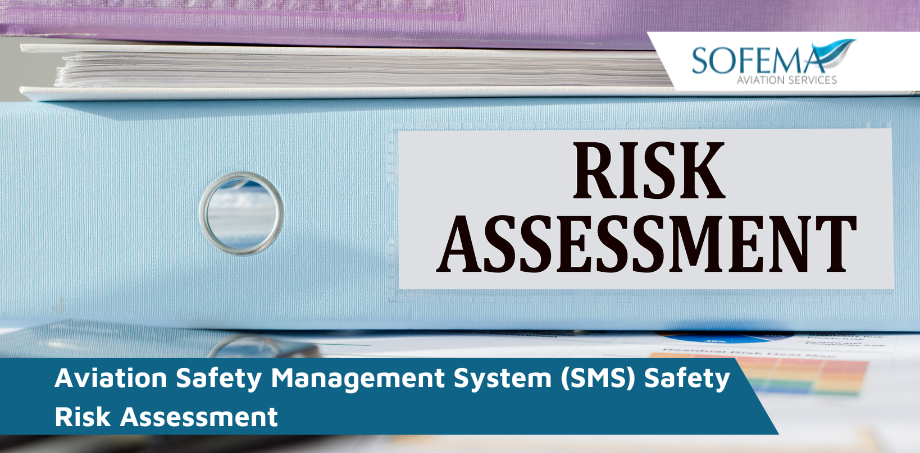Sofema Aviation Services (SAS) www.sassofia.com considers the process to deliver an effective Safety Management Risk Assessment.
Introduction
Safety risk assessment can be performed on steady-state operations to provide assurance that the risks associated with day-to-day operations remain tolerably safe. It can also be performed on proposed changes to a system or operation to ensure that the risks from any additional hazards or any impacts on existing hazards, introduced by the change remain acceptably safe.
Safety risk assessment features 8 steps:
- System / operation description
- Hazards identification processes
- Consequence analysis
- Causal analysis
- Evaluation of risk
- Mitigation of risk
- Approval of residual risk
- Safety assessment documentation
Definitions to use in relation to this Safety Risk Assessment Process
Hazard – A condition, object, activity or event with the potential of causing injuries to personnel, damage to equipment or structures, loss of material, or reduction of ability to perform a prescribed function.
Safety Event – A failure condition, causal factor, threat or precursor event which in isolation or in combination with other safety events could result in an undesirable event.
Undesirable Event – A stage in the escalation of an accident scenario where the accident will occur, unless an active recovery measure is available and is successfully used.
Outcome – A potential end point of an accident scenario which can be assigned a consequence severity.
Consequence – The degree of injuries to personnel, damage to equipment or structures, loss of material, or reduction of ability to perform a prescribed function arising from an outcome. Consequences have a magnitude.
Risk Controls (Barriers and Mitigation) – A system, activity, action or procedure that is put in place to reduce the risks associated with a hazard.
Mitigation may include:
- elimination of the hazard (preferred),
- reduction in the frequency of the hazard (barriers),
- reduction in the likelihood of the outcomes of the hazard (outcome mitigation),
- reduction of the severity of the outcomes of the hazard (consequence mitigation).
Risk
The combination of the predicted frequency and severity of the consequences of hazard(s) taking into account all of the potential outcomes.
Safety Risk Management
The identification of hazards associated with the day-to-day operations of an organisation, or associated with changes to the operations of an organisation; the assessment of the risks associated with those hazards; and the implementation and management of measures to reduce those risks to an acceptable level (hazard removal; or the application of barriers and/or mitigations – i.e. risk control).
The use of Bow Tie as a Risk Analysis Tool
- The method for building a bow-tie involves asking a structured set of questions in a logical sequence.
- The completed Bow-Tie illustrates the hazard, the undesirable event, the safety events and potential outcomes, and the risk controls put in place to minimize the risk.
- Risk management is about controlling risks. This is done by placing barriers to prevent certain undesirable events from happening.
- A control can be any measure taken that acts against some undesirable force or intention, in order to maintain a desired state.
- In the Bow-Tie methodology there are preventive or proactive barriers (on the left side of the Undesirable Event) that prevent the Undesirable Event from happening. There are also corrective or reactive controls (on the right side of the Undesirable Event) that prevent the Undesirable Event from resulting into unwanted Outcomes or reduce the consequence severity of the Outcomes.
Next Steps
Follow this link to our Library to find & Download related documents for Free.
Sofema Aviation Services (SAS) Provides Safety Management System Consultancy, Classroom, Webinar and Online Training including a 3-Day SMS Safety Risk Management course.
For additional details, please visit our websites www.sassofia.com and www.sofemaonline.com or email team@sassofia.com
Tags:
aviation safety, Safety Assessments, Safety Management System SMS, Safety Management, Aviation Industry, SMS, Aviation Safety Management System, Aviation SMS, Aviation regulatory training, SAS blogs, Safety Audit





